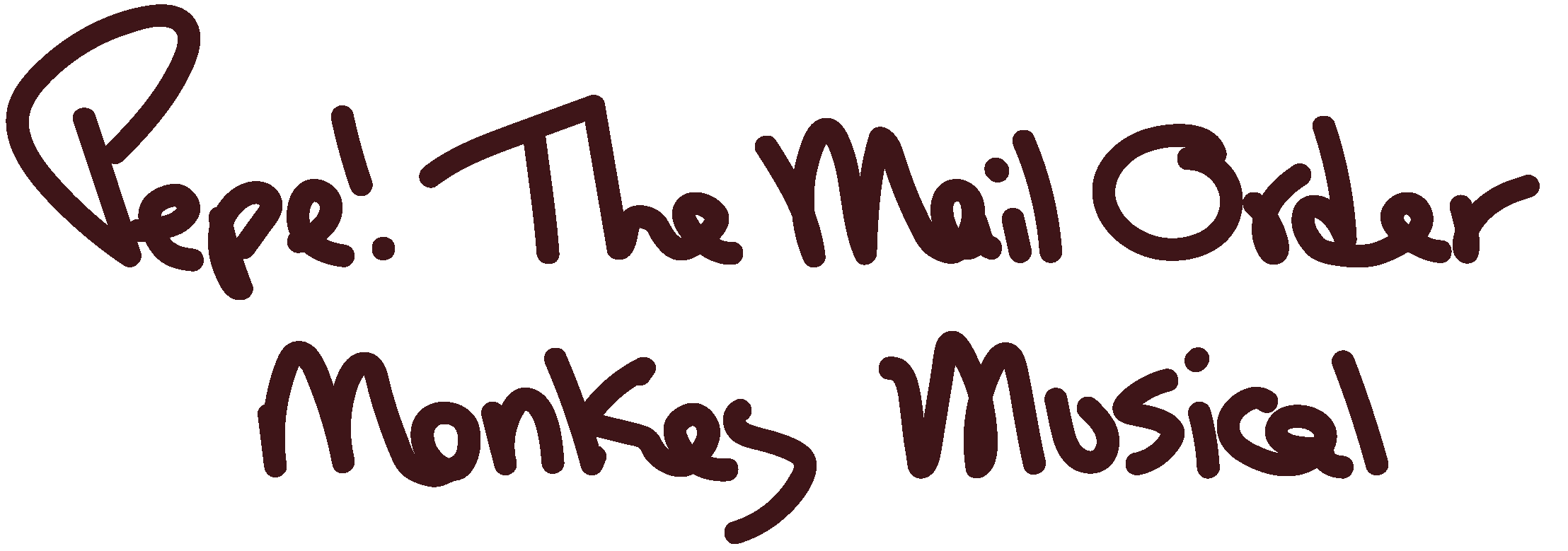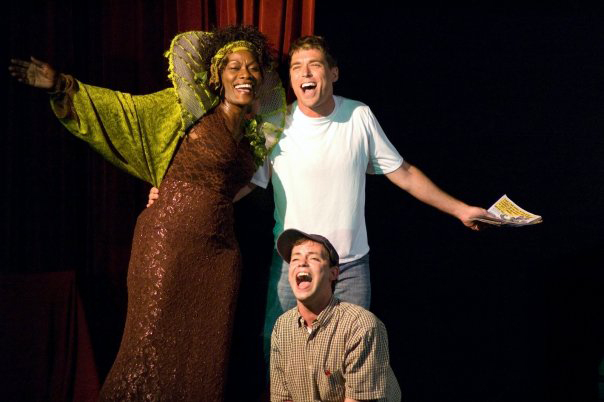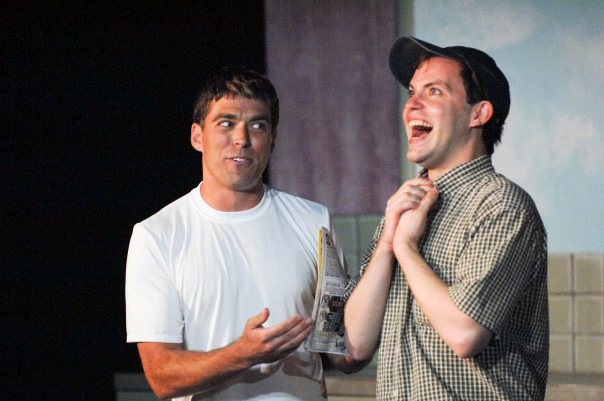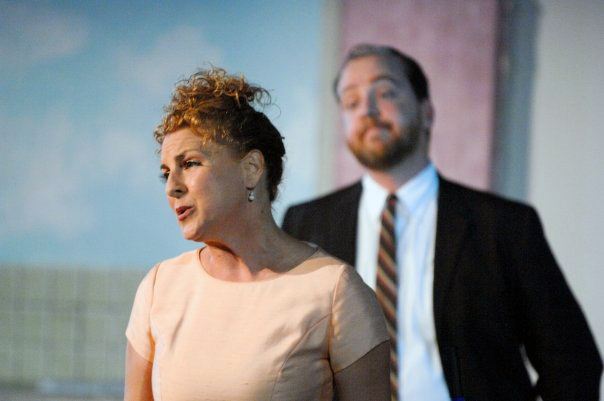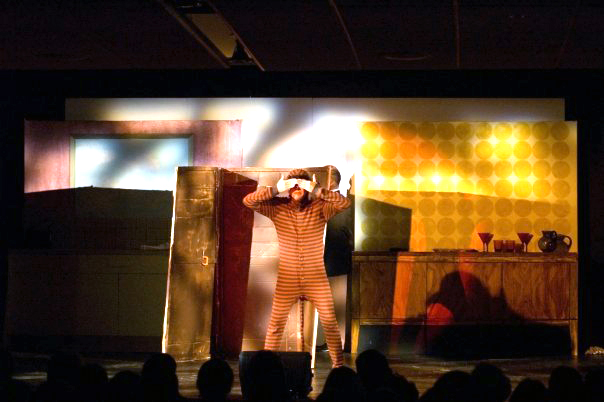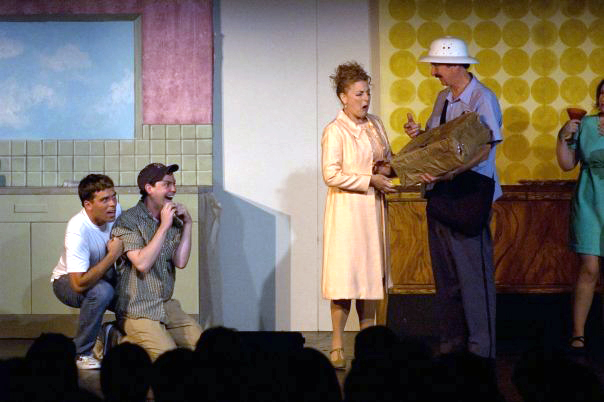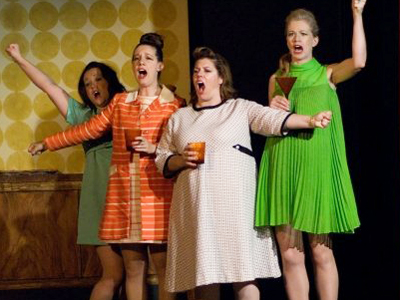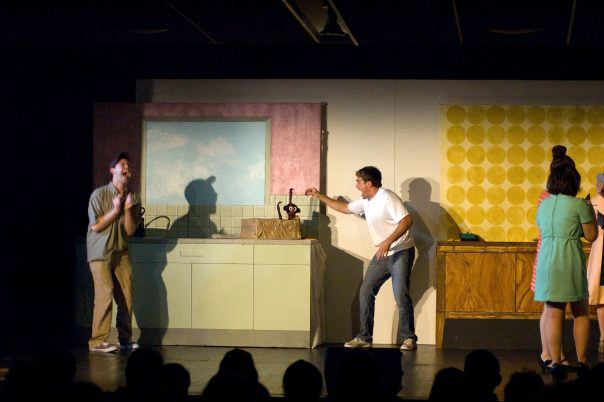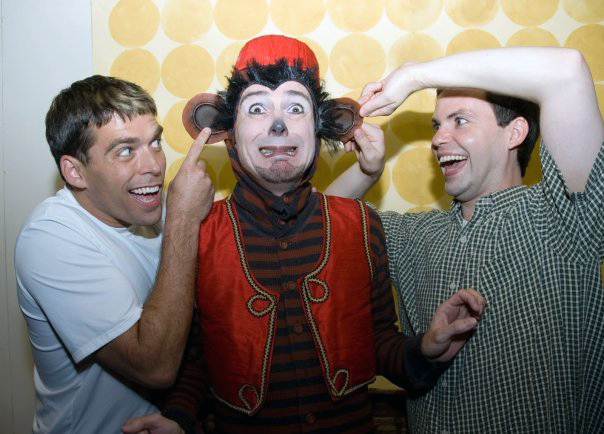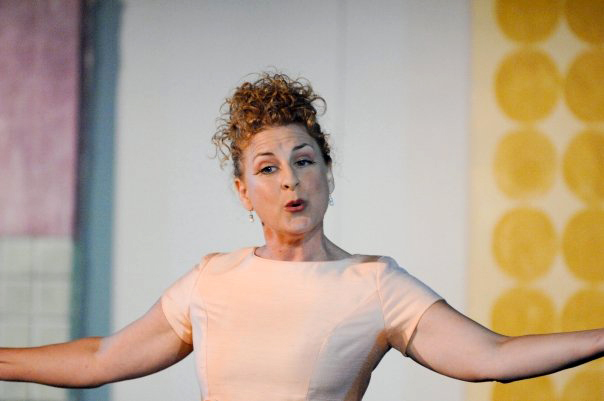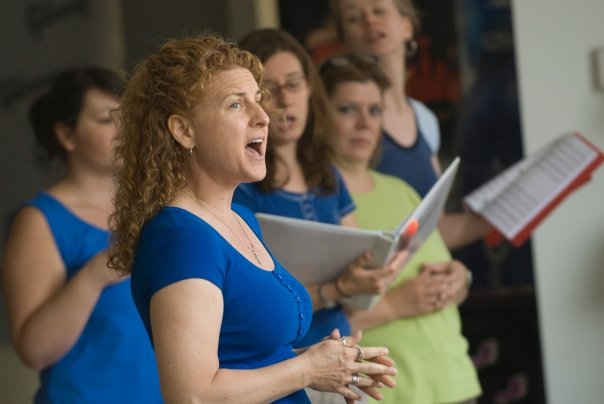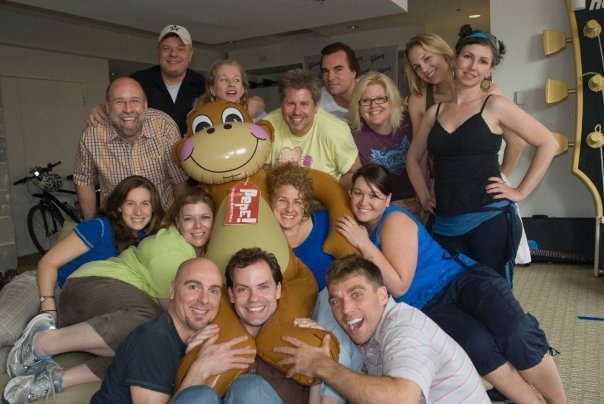
|
Interview from DC Theatre Scene

Composer Brian Wilbur Grundstrom:
Joel: Tell us about your composing career.
Brian: Pepe! is my first musical, but not my first time writing for voice, nor the orchestra, nor for theater. I have written several choral works, so the process of setting text to music was not new, but the traditional Broadway format requested by Jon was new. In writing concert choral works, I had more liberty to repeat and expand the text as required by the music. The Broadway format, however, I found to be much more rigid, and more about getting through the text. Not the lingering aria I wanted to write.
Joel: Talk about the process of writing the score.
Brian: Jon (Gann) may have requested a simple traditional Broadway format, but given my classical orchestral training and film work, there was no way that I was not going to have my [sophisticated if I may] voice work its way into the music. For example, rhythm was extremely important in “It’s Here”. Not written the standard 3/4 or 4/4, the compound meter (3+3+2+2/8) provided for that “extra” beat that made the song both sophisticated and catchy. This meter challenged the actors, but they rose to the occasion and the hard work paid off.
The structure, while limiting, however does provide a framework within which creativity can flourish. While Jon provided me with the structure – the A B and C parts, the text also required subtle variations, much like the flourishes on a Chopin Nocturne to provide interest while repeating the same material. Orchestration was also key to provide variation along with character development depending on who was singing the verse. For example, Chris got rock drums as part of his rebellious character. The father’s lines were simplified to be more in character.
Given this emphasis on a pre-defined format, writing Pepe required a lot of manipulation of the fundamentals of music – melody, harmony and rhythm. Unlike my orchestral compositions, the more impressionist elements of texture and dynamics took a secondary role, providing variation in repeats as opposed to defining structure.
I was actually surprised how much I used my knowledge of music theory to help me solve the problems at hand. In fact, it was considerably more than my recent concert premiere of “American Reflections for Strings and Harp”. In writing for orchestra, I orchestrate as I compose, and I have learned that I really can trust my ear to let me solve the issues at hand, and only analyze harmony as needed if a problem arises.
By contrast, writing for Pepe! started first with a piano score, and orchestrations were the last thing to be completed (and changed until the day before opening). During this process, parts of the musical had to be moved around and adapted to fit as necessary. Solving these issues required much more harmonic skill to get them to work appropriately. And add to that the obligatory “cheap modulation” to provide forward motion, as well the accommodation of the singers’ vocal ranges. Finesse and sophistication of music theory is required to make these modulations work properly and not sound tacky.
Another example of the deliberate use of harmony is in “He’s Gone”, where I employed a deceptive cadence to create interest. (A deceptive cadence means resolving to sixth rather than the tonic. In C major, that would meaning resolving to an A minor chord rather than a C major chord. It is called deceptive because two the notes in the chords are the same – C and E. The G however is replaced by and A.)
Lastly, interaction with the singers helped shape the work. When Rick Hammerly came over to record his solo for the cast recording, we made some refinements. Without a conductor, it was important to build in musical cues so that the actors know when to come in. For Rick, this meant adding in a few bells at the start of phrases following a held note.

Co-lyricist and Book writer Jon Gann
Joel: How did you meet your co-lyricist Andrea King?
Jon: A funny story. I was standing in line at a film festival in Ashland Oregon in March and began speaking with the woman next to me in line. She asked about my next film project, and I informed her that I was writing a musical – and just completed the lyrics to the last song over breakfast. She asked to hear it, so I sang the song in the middle of the sidewalk. We exchanged information, and I thought nothing of it. Later that afternoon, she emailed me with revised lyrics to the song — and they were good! My lyrics were about advancing the plot, and hers were more poetic. I asked if she wanted to take a crack at revising the lyrics to the whole show, and she accepted. Over the next 3 weeks, I would receive an updated song every few days. I edited a few lines from here and mixed them with a few of mine to get the final set you heard last night. We are flying Andrea (King) in from Oregon for the last week of the show — she has never been to DC, and this is her first musical.
—————–

|
